Using Microcredit Loans to Help to Lift the Poor Out of Poverty
Many institutions around the world are turning to microfinance both as a strategy to help lift the poor out of the poverty trap and to make a decent return on investment.
While the business gains from lending money to those who earn only about one or two dollars a day may seem limited, some of the major international banks are now turning their attention to this sector. In a new case study, INSEAD Adjunct Professor Mahboob Mahmood highlights the work of the Kashf Foundation in Pakistan. It’s a non-profit organization which has been posting dramatic growth while focusing on providing microcredit and social support services to women entrepreneurs at the bottom of the so-called wealth pyramid.
Since its launch in 1996, Kashf has grown to become the third-largest microfinance institution in Pakistan with some 69 branches, more than 135,000 customers and about 90 million US dollars in outstanding loans. “The whole area of social enterprise is burgeoning – and microfinance in particular – and the interesting thing is that a number of mainstream commercial banks have begun looking at microfinance as part of their overall emerging markets strategies. This creates both opportunities for traditional microfinance institutions, as well as challenges,” Mahmood says.
Citibank and Standard Chartered are among the major international banks looking to develop microfinance strategies, Mahmood says. “I think one of the big issues for the larger institutions – both the international ones, as well as the larger local ones – has been how to provide financing to the ‘missing middle’, small enterprises, medium-sized enterprises, individuals with small businesses and so on.” So although the major banks are expected to target those living on a dollar or two a day, they still see microfinance lending “as part of the overall solution because successful micro-entrepreneurs can grow into the sorts of customers that could be interesting.” In addition, the major banks are also interested in providing capital to microfinance organisations such as Kashf, he says, and he believes this goes well beyond a mere public relations exercise.


